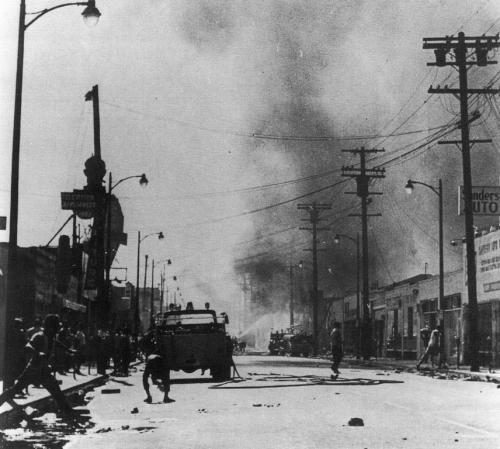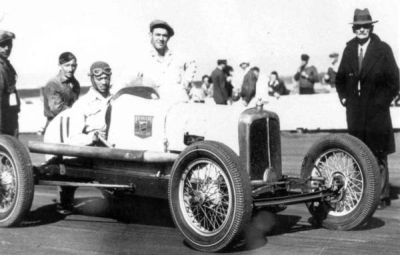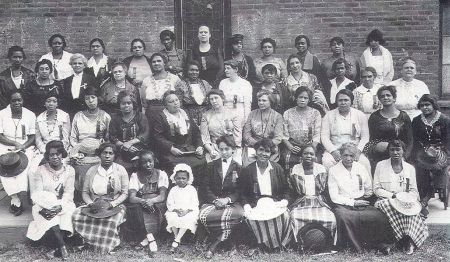Elizabeth Catlett (April 15, 1915
[2] – April 2, 2012)
[3] was an African-American
graphic artist and
sculptor best known for her depictions of the African-American experience in the 20th century, which often had the female experience as their focus. She was born and raised in Washington, D.C. to parents working in education, and was the grandchild of freed slaves. It was difficult for a black woman in this time to pursue a career as a working artist. Catlett devoted much of her career to teaching. However, a fellowship, awarded to her in 1946, allowed her to travel to Mexico City, where she would work with the
Taller de Gráfica Popular for twenty years and become the head of the sculpture department for the
Escuela Nacional de Artes Plásticas. In the 1950s, her main means of artistic expression shifted from print to sculpture, though she would never give up the former.
Although she had an individual exhibition of her work in 1948 in Washington, DC,
[3] her work did not begin to be shown regularly until the 1960s and 1970s, almost entirely in the United States,
[3][14] where it drew interest because of social movements such as the
Black Arts Movement and feminism.
[2][12] While many of these exhibitions were collective, Catlett had over fifty individual exhibitions of her work during her lifetime.
[2][4] Other important individual exhibitions include Escuela Nacional de Arte Pláticas of UNAM in 1962,
Museo de Arte Moderno in 1970, Los Angeles in 1971, the Studio Museum in Harlem in New York in 1971, Washington, DC in 1972, Howard University in 1972,
Los Angeles County Museum of Art in 1976,
Miller Gallery at Carnegie Mellon University in 2008,
[1][16] and the 2011 individual show at the
Bronx Museum. From 1993 to 2009, her work was regularly on display at the June Kelly Gallery.
[1]
Catlett's work can be found in major collections such as those of the
Museum of Modern Art, Metropolitan Museum of Art,
[17] Library of Congress,
[17] Minneapolis Institute of Arts,
[18] National Museum in Prague, the
Toledo Museum of Art, the
Clark Atlanta University Art Galleries, the
Palacio de Bellas Artes in Mexico, the
Instituto Politécnico Nacional,
[1][2][3] Carnegie Mellon University,
[16] the University of Iowa,
[9] the June Kelly Gallery and the
Schomburg Center for Research in Black Culture in New York.
[5]
During Catlett's lifetime she received numerous awards and recognitions.
[8] These include First Prize at the 1940 American Negro Exposition in Chicago,
[17] induction into the Salón de la Plástica Mexicana in 1956,
[3] the Distinguished Alumni Award from the University of Iowa in 1996,
[9] a 1998 50-year traveling retrospective of her work sponsored by the Newberger Museum of Art at
Purchase College,
[1][3] a
NAACP Image Award in 2009,
[14] and a joint tribute after her death held by the Salón de la Plástica Mexicana and the Instituto Politécnico Nacional in 2013.
[3] Others include an award from the
Women's Caucus for Art, the Art Institute of Chicago Legends and Legacy Award, Elizabeth Catlett Week in
Berkeley, Elizabeth Catlett Day in
Cleveland, honorary citizenship of
New Orleans, honorary doctorates from Pace University and Carnegie Mellon, and the International Sculpture Center's Lifetime Achievement Award in contemporary sculpture. The Taller de Gráfica Popular won an international peace prize in part because of her achievements .
[6][8][11][16] She received a
Candace Award from the
National Coalition of 100 Black Women in 1991.
[19]
Art historian Melanie Herzog has called Catlett "the foremost African American woman artist of her generation."
[11] By the end of her career, her works, especially her sculptures, sold for tens of thousands of dollars.
[5]
Artistry
Catlett is recognized primarily for sculpting and print work.
[3] Her sculptures are known for being provocative but her prints are more widely recognized, mostly because of her work with the Taller de Gráfica Popular.
[3][5] Although she never left printmaking, starting in the 1950s, she shifted primarily to sculpture.
[12] Her printwork was mostly woodcuts and linocuts with sculptures made of a variety of materials such as clay,
cedar,
mahogany,
eucalyptus, marble, limestone, onyx, bronze, and Mexican stone (
cantera).
[2][8] She often recreated the same piece in several different media.
[13] Sculptures range in size and scope from small wood figures inches high to others several feet tall to monumental works for public squares and gardens. This latter category includes a 10.5-foot sculpture of
Louis Armstrong in New Orleans and a 7.5-foot work depicting
Sojourner Truth in
Sacramento.
[5]
Much of her work is realistic and highly stylized two- or three-dimensional figures,
[4] applying the Modernist principles (such as organic abstraction to create a simplified iconography to display human emotions) of
Henry Moore,
Constantin Brancusi and Ossip Zadkine to popular and easily recognized imagery.
Her subjects range from sensitive maternal images to confrontational symbols of Black Power, and portraits of Martin Luther King, Jr., Harriet Tubman and writer
Phyllis Wheatley,
[4][13] as she believed that art can play a role the construction of transnational and ethnic identity.
[11] Her best-known works depict black women as strong and maternal.
[2][14] The women are voluptuous, with broad hips and shoulders, in positions of power and confidence, often with torsos thrust forward to show attitude. Faces tend to be mask-like, generally upturned.
[5] Mother and Child (1939) shows a young woman with very short hair and features similar to that of a
Gabon mask. A late work
Bather (2009) has a similar subject flexing her triceps.
[2] Her linocut series
The Black Woman Speaks, is among the first graphic series in Western art to depict the image of the American black woman as a heroic and complex human being.
[20]:46 Her work was influenced by the
Harlem Renaissance movement
[3] and the
Chicago Black Renaissance in the 1940s and reinforced in the 1960s and 1970s with the influence of the
Black Power, Black Arts Movement and
feminism.
[11][12] With artists like Lois Jones, she helped to create what critic Freida High Tesfagiorgis called an "Afrofemcentrist" analytic.
[17]















